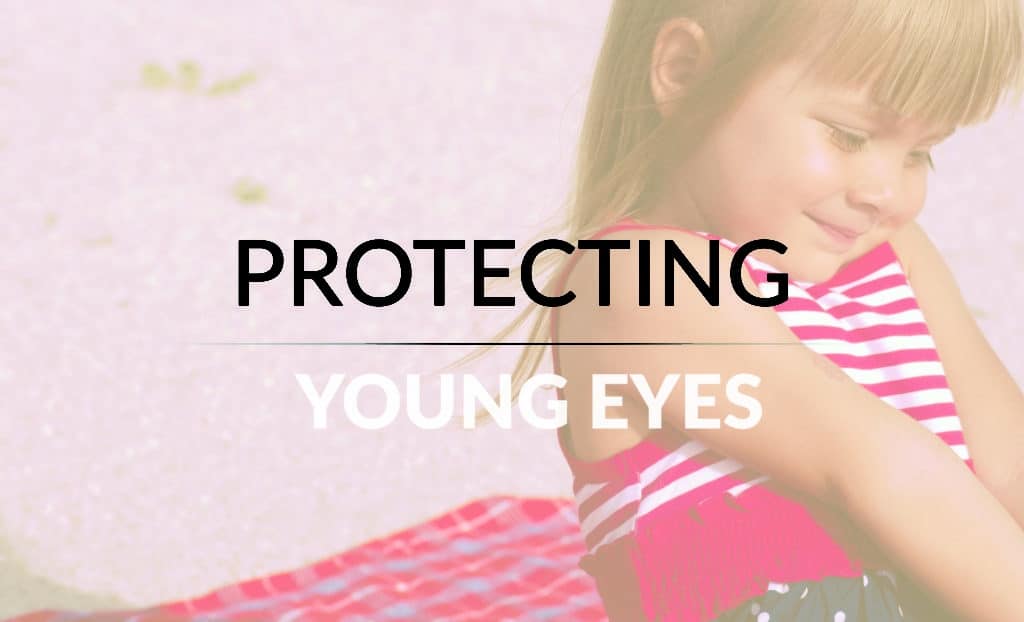
As a parent, you do everything in your power to make sure your children are healthy. That includes protecting them from injury, making sure their nutritional needs are met, and bringing them to the doctor’s office for the occasional checkup. But how often do you consider the health of your children’s eyes? The National Center for Children’s Eye Health reports that 9 percent of children between 5 and 17 years of age are nearsighted, and 13 percent are farsighted. Further, between 15 and 28 percent of children ages 5 to 17 have astigmatism. Uncorrected vision problems in young children (6 to 72 months of age) can affect their cognitive and visual-motor development, and visual function is a strong predictor of academic performance in school-age children.
The best way to prevent vision-related development issues in your children is to schedule regular vision screenings with your eyecare provider, so that problems can be detected early and treatment can be administered as soon as possible. Infants should have their vision checked as part of regular pediatric checkups for the first three years. Between the ages of 3 and 6, an eye exam every year is recommended. Throughout childhood and the teenage years, exams should be scheduled as necessary.
Of course, not all vision issues are genetic. Proactive protection is the best way to prevent damage to children’s eyes from common accidents and other dangers. Preventblindness.org lists the most common causes of eye injuries to children as:
- Misuse of toys
- Falls from beds, against furniture, and on stairs
- Misuse of everyday objects such as work and garden tools, kitchen utensils, knives, and pens and pencils.
- Contact with household products such as paint, detergents, glues, etc.
- Automobile crashes or accidents
Luckily, protecting your child’s eyes from injury involves some steps that you may already be taking, such as using proper occupant restraints (car seats, safety belts) in your vehicles, keeping chemicals out of reach of children, padding the corners of your furniture, and reading the warnings on packaging and toys. In addition to these steps, Prevent Blindness recommends installing locks on floor-level kitchen and bathroom cabinetry, avoiding flying or projectile-throwing toys, installing sufficient stairwell lighting and handrails, keeping BB guns away from children, and stowing or securing any loose objects while driving a vehicle. You can find the full list of recommendations on the Prevent Blindness website.
You should also consider specialized sports eye protection. Swim goggles will protect from irritants in pool or ocean water, and there are goggles and eye shields widely available in children’s sizes for almost every sport. Many sports goggles, especially those with lenses made of polycarbonate, include UV protection. UV protection is an important consideration for everyday protection as well, The Vision Council reports that children generally experience three times as much sun exposure as adults—thus their eyes are more likely to be exposed to UV rays. Protect your children’s eyes in the outdoors by shopping for a suitable pair of sunglasses with them. To be sure your child is more likely to wear their sunglasses, have them pick out a pair they like, make sure the sunglasses fit properly, and look into clip-ons if your child already wears prescription glasses. Be sure that the sunglasses are UVA/UVB protective!
Ensuring the health and safety of your children’s eyes is just one part of being a parent. Takle Eye Group can help make it easier. Call 770-228-3836 to set up an examination or screening, and trust your children’s eye health to the same providers who care for your own.




